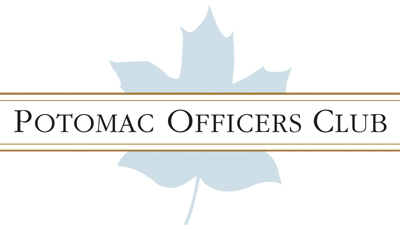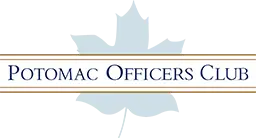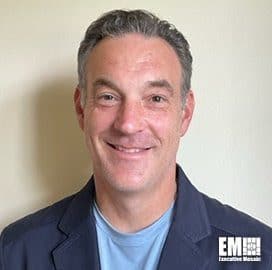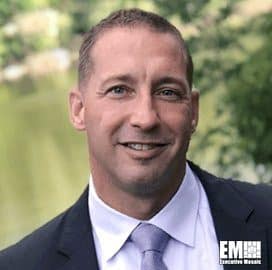
Member Profile: Justin Woulfe of Systecon North America
Meet our latest member! Justin Woulfe is the chief technology officer and co-founder of Systecon North America, where he leads efforts in predictive analytics, systems engineering and cost-effective logistics optimization for the aerospace and defense sector. With more than 17 years of experience, Justin has built a career around helping organizations balance cost, capability and readiness across complex acquisition and sustainment programs.
His expertise spans business strategy, data analytics, artificial intelligence applications and supply chain operations, with a strong focus on leveraging data-driven approaches to improve decision-making. Justin is recognized for his leadership in implementing model-based engineering and predictive decision support across the Department of Defense and allied defense organizations.
Potomac Officers Club: What can you tell us about your background and how you’ve been able to adapt to the ever-changing challenges of the federal landscape over the course of your career?
Justin Woulfe: I started my career grounded in electrical engineering from the Virginia Military Institute, and over the years, I’ve built on that foundation with advanced degrees in engineering management and supply chain management. My journey has always been about connecting the technical with the practical—especially in the high-stakes environment of defense logistics and sustainment.
In the federal space, change is constant, but it’s often not fast. Navigating that requires a mix of patience, persistence and the ability to speak multiple “languages”—whether it’s translating complex analytics for senior leaders, aligning strategy with emerging tech, or bridging industry tools like Opus Suite with government decision-making. At Systecon, we’ve stayed ahead by focusing relentlessly on outcomes: better readiness, lower costs and smarter planning. We’ve done that by helping the DOD and our partners move toward predictive analytics and lifecycle optimization, areas where I’ve personally invested years of research and implementation.
POC: If you were given free rein to enact changes in the federal landscape, what are the first three changes you would implement and why?
Woulfe: Great question. If I had a magic wand, my first priority would be to embed data-driven decision support at the inception of every acquisition and sustainment effort. Too often, analytics are bolted on at the end, when decisions have already been made. Tools like Opus Suite are most powerful when they shape the architecture of programs from the start—helping stakeholders visualize tradeoffs in cost, readiness and risk early and often.
Second, I’d streamline contracting pathways to enable quicker adoption of proven commercial-off-the-shelf, a.k.a. COTS, solutions. We’re seeing some progress here with initiatives like the Chief Digital and Artificial Intelligence Office’s push through Advana, but scaling these efforts is essential. Our warfighters don’t have time to wait five years for innovation to make it through traditional procurement cycles.
Finally, I’d push for more deliberate investment in cross-functional digital fluency across the DOD. Predictive analytics, AI and model-based systems engineering are powerful, but only if the teams using them understand the “why” behind the data. Building that institutional capability ensures we’re not just buying tools—we’re enabling transformation.
POC: With emerging technology influencing the federal government and industry more by the day, what are some of the challenges on the business side of innovation that aren’t always discussed as often as they should be?
Woulfe: Innovation in defense isn’t just about having the next big technology—it’s about timing, trust and transition. One challenge that doesn’t get enough attention is the “last-mile” problem of innovation—the operationalization of tools and processes in environments that are risk-averse by design. You can have a breakthrough solution, but if it doesn’t fit cleanly into existing workflows, or if it requires too much change management, it’ll stall.
Another overlooked issue is sustainment of innovation. The DOD rightly wants to pilot and prototype rapidly, but the real ROI comes when those innovations are integrated, scaled and supported over time. That’s where business models, incentives and acquisition strategies need to evolve.
At Systecon, we’re excited about the future because we’re already helping solve these challenges. We’ve shown how lifecycle simulations, scenario-based planning and operational readiness modeling can drive real-world decisions in hours instead of months. And we’re committed to being a partner, not just a provider—working shoulder-to-shoulder with acquisition, sustainment and logistics professionals to turn insights into outcomes.
POC: What excites you most about the future and your continued partnership with the Department of Defense?
Woulfe: There’s a real shift happening right now. The DOD is putting increasing focus on readiness, predictability and mission effectiveness, and they’re demanding more rigor in how logistics and sustainment strategies are built and evaluated. That plays directly into our strengths. With Opus Suite, we enable decision-makers to simulate thousands of scenarios, understand second- and third-order effects, and optimize everything from spares planning to maintenance strategies.
What excites me most is the evolving role of data-driven decision support. We’re moving from a world of anecdote and inertia to one where program offices can defend their budgets, justify their tradeoffs and adapt their plans dynamically—based on quantitative evidence, not gut instinct. That’s a cultural transformation, and it’s happening across services and portfolios.
The capabilities are here, and the need is urgent. Whether it’s maintaining CH-53Ks in contested logistics environments, preparing for Indo-Pacific engagements, or improving depot throughput, the answers are often in the data—we just have to know how to find them.
POC: How is Systecon positioning itself to lead in these areas?
Woulfe: We’ve made deliberate investments in not just the software, but the ecosystem around it—training, integration and strategy support. Our goal is to help the DOD think differently about sustainment: not as an afterthought, but as a strategic advantage. Whether it’s helping a major acquisition program justify its maintenance concept, or working with the CDAO and Advana to unify decision intelligence across platforms, we’re all-in.
We’re also doubling down on our partnerships—both with the government and with other solution providers—because we know that interoperability and speed are key. Our approach is agile, evidence-based and designed to empower decision-makers at every level.
At the end of the day, our mission is to support the warfighter. That means helping ensure the right part is in the right place at the right time—every time. And with the right tools, people and mindset, that’s not just possible. It’s inevitable.

Category: Executive Profiles




